“Ukraine bans Christianity.” This claim, which has spread like wildfire on social media among many pro-Kremlin accounts, is completely false.
The confrontation between the Ukrainian state and the Ukrainian Orthodox Church of the Moscow Patriarchate goes back a long way, and in recent months there have been various incidents, such as searches of churches and arrests of people linked to the church on charges of spying for Russia, which Russian propaganda has used to portray Ukrainians as “anti-Christians.” The banning of the Ukrainian Orthodox Church from the Moscow Patriarchate has deep roots, going back a century to when the Bolsheviks seized power in Russia after the October 1917 revolution.
For the new communist regime, the Orthodox Church was an enemy to be destroyed, so the new authorities unleashed a bloody crackdown. More than 1,200 Orthodox priests were tortured and killed by the Red Guards in the early years of Soviet rule, and religious celebrations were banned as counter-revolutionary, including Christmas, which was officially banned in 1918. The 22nd Communist Party Congress in April 1923 approved the initiation of an ‘anti-religious agitation and propaganda campaign’ for the eradication of popular customs related to religious traditions: The Christmas tree was declared anti-Soviet, while civil ceremonies, with the red star replacing the cross, were created to replace baptisms and funerals. In 1929 all religious holidays were abolished with the slogan ‘down with church holidays’.
Many churches were destroyed or converted into stables, warehouses or even “museums of atheism.” For example, the famous cave monastery in Kyiv was converted in 1926 into a museum of anti-religious propaganda until the caves were closed three years later; St. Sophia Cathedral was turned into a historical museum in 1934 and St. Michael’s monastery was looted, partially destroyed and turned into an administrative centre in the 1930s; St. Nicholas Catholic Cathedral was closed in 1938 and subsequently used by the NKVD. By 1941 only 500 churches remained open; before the revolution there were 54,000.
The Stalinist purges of the 1930s intensified religious persecution, particularly in Ukraine and Belarus. The Ukrainian Autocephalous Orthodox Church and its Belarusian counterpart had already been banned as nationalist in the late 1920s, but after the Holodomor, further repression reached thousands of priests and believers. In Belarus alone, 2,000 priests were shot or sent to the Gulag. On the other hand, the Ukrainian Catholic Church came under the control of the Kremlin in 1939, following the Soviet invasion of Poland under the Ribbentrop-Molotov Pact. Before leaving the area for the German invasion in June 1941, the Soviets murdered or deported many Catholic priests. As the Red Army advanced into western Ukraine in 1944, the NKVD wiped out what remained of the Ukrainian Catholic Church; those who were not killed were forced to submit to the Russian Orthodox Church.
The Second World War marked a change in Soviet policy towards the Russian Orthodox Church. Soviet propaganda began to appeal to patriotism and hitherto counter-revolutionary historical figures to encourage resistance, and did the same with religious sentiment. On 4 September 1943, Stalin held a reception attended by the acting Patriarch, Metropolitan Sergei, Metropolitan Aleksei of Leningrad and Metropolitan Nikolai of Kiev and Galitzia. The priests obtained Stalin’s permission to convene a Council of Bishops to formally elect the Patriarch of Moscow and All Russia and form a Holy Synod. The Council met on 8 September and Sergey was elected Patriarch. The Council also issued two statements. The first, thanking Comrade Stalin: “Deeply moved by the sympathetic attitude of our National Leader and Head of the Soviet Government, I.V. STALIN, towards the needs of the Russian Orthodox Church and towards our humble works, we, your humble servants, express to the Government the sincere gratitude of our Council and the joyful conviction that, encouraged by this sympathy, we shall redouble our share of work in the national struggle for the salvation of the Fatherland.” And another, condemning traitors to the faith and the fatherland: “We reaffirm this condemnation and declare that anyone who is guilty of betraying the cause of the Church and going over to the side of fascism is an enemy of Christ the Lord and will be excommunicated and, if he is a bishop or a cleric, will be deposed from his office.”
It is said that Stalin asked the Patriarch to visit him in the Kremlin. The Patriarch appeared before Stalin dressed in a suit, so the Communist leader asked him: “Who do you fear more, God or me?” The Patriarch did not know what to say, so Stalin continued: “You fear me more, that is why you did not come dressed as a priest.” Whether this story is true or not, Stalin ‘restored’ the Orthodox Church as an ally of the regime, allowing religious publications and the reopening of seminaries and thousands of churches, up to 22,000 before Khrushchev came to power. In 1959 Nikita Khrushchev launched a new anti-religious campaign that led to the closure of many churches (by 1975 only 7,000 were open), the imprisonment of some priests and the resignation of many more. This resulted in a clergy more subservient to the state and completely infiltrated by the KGB, turning the Orthodox Church into another appendage of the Soviet regime. In the words of Konstantin Kharchev, chairman of the Soviet Council for Religious Affairs: “Not a single candidate for bishop or any other high office, let alone a member of the Holy Synod, passed without the approval of the Central Committee of the CPSU and the KGB.”
With the fall of communism, Alexis II became Patriarch, having been elected eighteen months earlier, and marked a revival of the Russian Orthodox Church and a weakening of state control. However, he was accused by a parliamentary investigative committee, which examined KGB files in 1992, and several intelligence officers of having been recruited as an agent by the Estonian branch of the KGB on 28 February 1958, shortly after his 29th birthday, under the code name ‘Drozdov’. The Patriarch claimed that reports that he was a “KGB agent” were merely exaggerations of the compromises he had to make in order to deal with the Soviet authorities. Alexis II maintained very good relations with the Russian government, with both Yeltsin and Putin, and radically opposed the schism of the Ukrainian Orthodox Church of the Kyiv Patriarchate, which severed its ties with the Moscow Patriarchate in June 1992. There is also the Ukrainian Autocephalous Orthodox Church, founded in 1921, which survived the Soviet Union both inside and outside the country. The two churches were united in 2018 as the Ukrainian Orthodox Church.
Alexis II died in December 2008 and his successor was elected on 27 January 2009 from among three candidates: Kirill, Metropolitan of Smolensk and Kaliningrad, Kliment, Metropolitan of Kaluga and Borovsk, and Filaret, Belarusian Metropolitan of Minsk. All three worked for the KGB, according to KGB files examined in 1992. Kirill was identified as agent ‘Mikhailov’, Kliment as agent ‘Topaz’ (although there is less evidence against him) and Filaret as agent ‘Ostrovskii’. Kirill, who was elected patriarch by a large majority, worked for the KGB in Switzerland while living in Geneva in the early 1970s, officially as the representative of the Russian Orthodox Church to the World Council of Churches (WCC). His role, according to declassified documents quoted by the Swiss weekly Sonntagszeitung and Le Matin Dimanche, was to influence the WCC, which was already infiltrated by the KGB, to denounce the United States and its allies, and also to soften its criticism of the lack of religious freedom in the Soviet Union.
Under Kirill’s rule, the Russian Orthodox Church has strengthened its role as a staunch ally of the Kremlin and its president, former KGB member Vladimir Putin. For the Moscow patriarch, “Putin saved Russia from collapse”, and his rule since coming to power is a “miracle of God.” Kirill supported Russia’s aggression in eastern Ukraine in 2014, an event that weakened the Moscow Patriarchate’s influence and eventually led to the formalisation of the break with the Russian Church when the spiritual leader of the world’s Eastern Orthodox Christians, Ecumenical Patriarch Bartholomew I of Constantinople, recognised the independence of the Ukrainian Orthodox Church at a ceremony in Istanbul on 6 January 2019.
Kirill also supported the intervention in Syria in support of Bashar Al-Assad, an intervention that the Patriarch said was “justified as defensive in nature,” and the Patriarch of All Russia was again a strong supporter of Putin’s policies when the Russian army invaded Ukraine on 24 February 2022. “We have entered into a struggle that has not a physical but a metaphysical meaning,” he said in a sermon on 6 March, justifying the invasion to prevent the “extermination” of loyal Russians in Donbass and to fight “sin.” The Patriarch’s position has been echoed by the Russian Orthodox Church, and indeed none of the 400 or so bishops of the Russian Orthodox Church have spoken out against the invasion, and only 300, mostly living outside Russia, of the more than 40,000 clergy, priests and deacons of the Russian Orthodox Church have dared to make a public statement criticising the war.
Kirill’s stance came as a blow to the Ukrainian church that remained loyal to the Moscow Patriarchate and nearly 400 parishes severed ties with the Russian Orthodox Church. The number of communities that have disassociated themselves from Moscow has continued to grow in the face of continued pro-war statements and Kirill’s thunderous silence on war crimes committed against Ukrainians, but there are still around 7,000 parishes “linked” to Moscow. The bill passed by the Rada (Ukrainian parliament) seeks to end that linkage.
The bill, “On the Protection of Constitutional Order in the Sphere of Activities of Religious Organisations,” needed 226 votes of the 450 deputies in the Rada to pass, and received the support of 265. The law, which will come into force 30 days after its publication, gives Ukrainian Orthodox Church institutions up to nine months to sever their ties with the Moscow Patriarchate, failing which a court will decide to outlaw them.
No, Ukraine is not banning Christianity and there is no religious motivation behind the draft law against the Orthodox Church loyal to the Moscow Patriarchate. It is not difficult to understand that Ukraine does not allow on its territory the activities of an organisation that propagandistically collaborates with the Kremlin in its war of aggression and that justifies or covers up crimes against the Ukrainian people. Nor is it difficult to understand, from the point of view of national security in the midst of a war, that you would ban an institution so closely linked to the secret services of the country that is invading you. No, Ukraine is not banning Christianity, Ukraine is doing what it has shown it does best: defending itself.
Read also
Trump puts Europe in front of the mirror
Donald Trump’s victory has created a sense of uncertainty among many European governments, who fear a US retreat from Europe and what that would mean for the defence of the Old Continent.
Álvaro Peñas
Darío Madrid: “It is not necessary to defend a pink legend of the Inquisition, but simply to put it in context”
Álvaro Peñas: Why a book about the Spanish Inquisition?
Álvaro Peñas
Manuel Acosta: “Since the very foundation of Spain, neither Catalonia could be understood without Spain, nor Spain without Catalonia”
Interview with Manuel Acosta Elías, PhD in Hispanic Philology, graduate in Geography and History from the University of Barcelona and VOX MP for Barcelona in the Parliament of Catalonia, where he is the spokesman for the University, Culture and Education Committees.
Álvaro Peñas
The Banned Writers of the Slovo House
The Holodomor is a genocide that has become better known as a result of the Russian invasion of Ukraine, but when the crime was committed almost a century ago, the world did not know or did not want to know, and only a few voices, such as the journalist Gareth Jones or the Austrian engineer Alexander Wienerberger, dared to denounce the barbarity committed by Stalin.



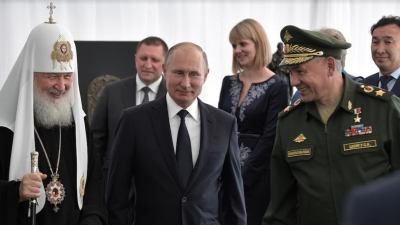

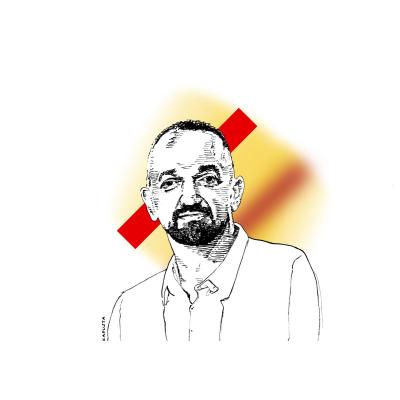

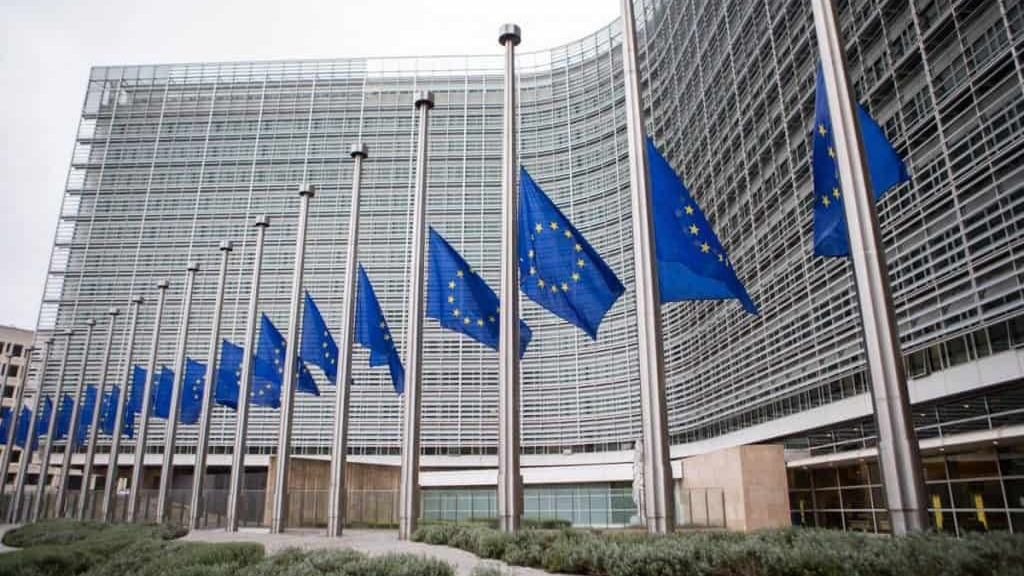


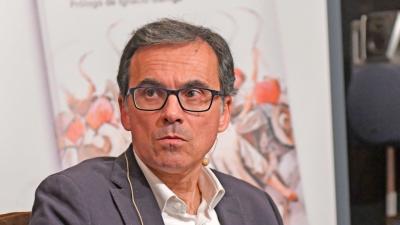

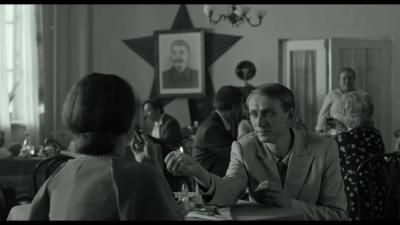

Comments (0)